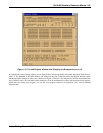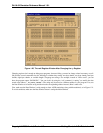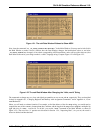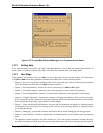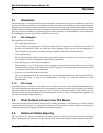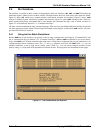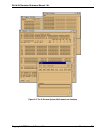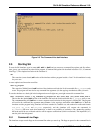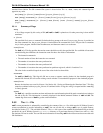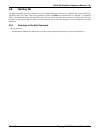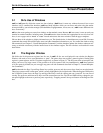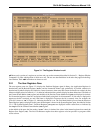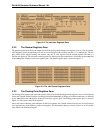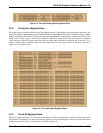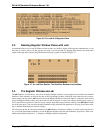
2-4 Overview Copyright © 2000 Hewlett-Packard Co.
Ski IA-64 Simulator Reference Manual 1.0L
2.5 Starting Ski
To start the Ski simulator, type its name (
ski
,
xski
,or
bski
) and any necessary command line options and file redirec-
tions, just as you would start any other Linux program. (Command line options are described in Section 2.5.1, “Command
Line Flags”.) The simplest invocation of the simulator is:
ski
This starts the (curses-based)
ski
version of the simulator with no program loaded: a “bare” IA-64 emulation is ready
for you to use.
A more sophisticated invocation would be:
xski my_program
This starts the (X/Motif-based)
xski
version of the simulator and loads the IA-64 executable file my_program, ready
to run. The program will not receive any command line arguments (via the argc/argv mechanism) when you run it.
To run the simulator as a batch job in the background on an all-night run, you might execute this command line:
bski -noconsole -stats -i my_commands my_program foo bar <test_data >out_stuff 2>bad_news &
This invokes the (batch)
bski
version of the simulator and loads the IA-64 executable file my_program, ready to run.
The -noconsole flag tells
bski
not to create a separate console window for the program’s standard I/O. The program
will receive the command line arguments foo and bar via the argc/argv mechanism when
bski
runs it. Both the
simulator and the program being simulated will have standard in, standard out, and standard err redirected from/to
test_data, out_stuff, and bad_news, respectively, and the simulator will execute the commands in
my_commands. (Ski never reads from standard in, so there is no possibility of confusion.) The -stats flag specifies
that at the end of the run, collected statistics will be output to standard out (which is redirected). The ampersand (“&”)
runs the job in the background.
2.5.1 Command Line Flags
The simulator accepts certain flags on the command line when you start it up. The flags are passed on the command line in
Figure 2-3. The Command-Line
bski
Interface



